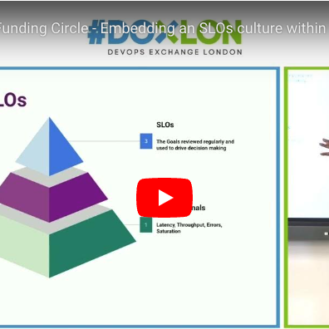What is Phalcon?
Phalcon is a php extension written in C. The code is pre-compiled and not interpreted which improves performance. The Zephir/C extension and PHP are loaded together on server startup which makes the functions and classes available to all php applications.
Phalcon pros 🙂
- High performance
- PSR-4 autoload compliant
- Command line devtools
- Active Community
- Minimal library including components like MVC
- Started 4th November 2012 (mature)
- Templating (VOLT), ORM and Routing included
Phalcon cons 🙁
- Installation instructions outdated
- Extension compilation can be tricky
- Devtools can be buggy
Tutorial Requirements:
- MacOS >= 10.14
- MAMP 5.7
- Apache 2.2.34 VirtualHost configuration
- MySQL 5.7 create a database
- PHP 7.2
- Composer installs devtools
- Phalcon
We’ll cover:
- Installation of MAMP & downgrade to php 7.2
- Installation of phalcon.so
- Installation of phalcon devtools via composer
- Localhost host configuration
- Apache VirtualHost server configuration
- Database creation
- Scaffolding an application with devtools
- Verify the application in browser
⚠ Article written in 2014 and refreshed in 2020. Development environments will differ. For guidance, see original install docs for phalcon & devtools. Getting stuck, drop a comment.
1. Installation of MAMP & downgrade to php 7.2
Download and install MAMP
Downgrade to php7.2. Edit file:
/Applications/MAMP/conf/apache/httpd.conf
Overwrite 7.4.2 with 7.2.22
LoadModule php7_module /Applications/MAMP/bin/php/php7.4.2/modules/libphp7.so
⚠ As no precompiled php7.4 phalcon.so extension exists in the php-phalcon-mamp repo downgrade MAMP’s from php7.4 to php7.2.
Stopping Apache:
sh /Applications/MAMP/bin/stopApache.sh
Starting Apache:
sh /Applications/MAMP/bin/startApache.sh
⚠ Do not use MAMP GUI buttons, these will undo and overwrite changes, because MAMP wants everyone to use MAMP PRO. Instead control the server using the provided bash commands. Or depending on your CLI familiarity locate the MAMP apachectl. If you’re a beginner stick with the bash scripts.
Verify successful downgrade by checking phpinfo and search for ‘Configuration file path‘ and ‘Loaded configuration file‘ both should reference php7.2.22.
2. Installation of phalcon.so
cd to the ‘~’ user directory
cd ~
Clone the phalcon mamp extensions
git clone https://github.com/majksner/php-phalcon-mamp
cd into the right php extension directory
cd php-phalcon-mamp/php7.2.1
cp the phalcon.so extension to the php extension directory
cp ./phalcon.so /Applications/MAMP/bin/php/php7.2.22/lib/php/extensions/no-debug-non-zts-20170718/
Find and edit the active ‘loaded’ php.ini. Edit file:
/Applications/MAMP/bin/php/php7.2.22/conf/php.ini
Search for text:
; Dynamic Extensions ;
Add your phalcon.so beneath the last entry and save the file
extension=phalcon.so
Stop and Start Apache using the bash method in Section 1 (above). Navigate to phpinfo. On the page search for ‘phalcon’.
3. Installation of phalcon devtools via composer
cd back to user home.
cd ~
💡 If you’ve followed the tutorial you could also use cd –
On the command line type.
which composer
The above should output an absolute path to composer. If it does not run the following command to get composer.
curl -s http://getcomposer.org/installer | php
⚠ If you have any issues refer to the composer installation and install locally or globally. A global installation is more maintainable on a personal machine.
Once composer is installed, type composer on the command line which will output a list of available commands.
php composer.phar
⚠ The best composer setup is to use a symlink to composer where php directly is not directly invoked.
Once you have a composer available. create the composer.json to install phalcon devtools.
vi composer.json
Type
{
"require-dev":
{
"phalcon/devtools": "^3.4"
}
}
Then
/Applications/MAMP/bin/php/php7.2.22/bin/php composer.phar install
⚠ depending on your .bash_profile, and $PATH environment variable composer may be invoked under a different name i.e. plain old “composer” this is cleaner.
After devtools installation via composer type the command below to verify
/Applications/MAMP/bin/php/php7.2.22/bin/php ./vendor/bin/phalcon -v
⚠ Your phalcon devtools are not available to system or your .bash_profile which is why ./vendor directory is used.
4. Localhost host configuration
Open your hosts file, edit as root, tip ‘sudo nano’:
/private/etc/hosts
💡 If you have trouble use a hosts editor similar to HostMan to simplify.
Append the comment and host entry below to the end of the file
#phalcon local server
127.0.0.1 phalcon
Test the new entry. The command below should not timeout.
ping -c 4 phalcon
💡 If you have trouble disable ‘stealth mode’, System Preferences -> Security & Privacy -> Firewall -> Firewall options -> Enable stealh mode . Retry.
5. Apache VirtualHost server configuration
Clone the repo under your htdocs
git clone https://github.com/colin-humphrey/phalcon-root.git
⚠ You need to enable virtual hosts uncomment: Include /Applications/MAMP/conf/apache/extra/httpd-vhosts.conf in your httpd.conf. Change Listen 8888 -> Listen 80. Stop and Start apache using the method mentioned above.
Edit: /Applications/MAMP/conf/apache/extra/httpd-vhosts.conf
Completely delete or comment out VirtualHost entries: dummy-host.example.com && dummy-host2.example.com
Add a VirtualHost configuration entry for the phalcon site
# Phalcon
<VirtualHost *:80>
ServerAdmin admin@phalcon
DocumentRoot "/Applications/MAMP/htdocs/phalcon-root/phalcon/public"
ServerName phalcon
ErrorLog "/Applications/MAMP/logs/phalcon-error_log"
CustomLog "/Applications/MAMP/logs/phalcon-access_log" common
<Directory "/Applications/MAMP/htdocs/phalcon-root/phalcon/public">
DirectoryIndex index.php
</Directory>
</VirtualHost>
Test the paths. At the moment the app is not scaffolded so a DocumentRoot warning will be thrown.
/Applications/MAMP/bin/apache2/bin/httpd -t
6. Database creation
Navigate to phpmyadmin SQL editor and create the database
CREATE DATABASE phalcon;
Select the newly created phalcon database and create a table against it using SQL editor tab
CREATE TABLE `mvc` (`id` int not null auto_increment primary key,`fact` varchar(255),`pro` varchar(255),`con`varchar(255),`source`varchar(255),`description` varchar(255),`notes` text,`created` timestamp null default null,`modified` timestamp not null default current_timestamp on update current_timestamp );
7. Scaffolding application with devtools
Once the table is created on the database. Navigate to the phalconbasic DocumentRoot:
cd /Applications/MAMP/htdocs/phalcon-root/
Use the phalcon command to scaffold your app
/Applications/MAMP/php/php7.2.22/bin/php ~/vendor/bin/phalcon create-project phalcon
Edit the database configuration and ensure the username, password and database are correct. Edit:
phalcon/app/config/config.php
'username' => 'root', 'password' => 'root', 'database' => 'phalcon'
// MAMP defaults are 'root' and 'root'
The baseUri should be “/”
'baseUri' => '/'
Scaffold the DB
phalcon scaffold basics
Restart the server
8. Verify application in browser
⚠ The Controller throws a Namespace error be sure to remove the Namespace in file, /Applications/MAMP/htdocs/phalcon-root/phalcon/app/controllers/MvcController.php on line 2.
Navigate to
http://phalcon/mvc 🎉




